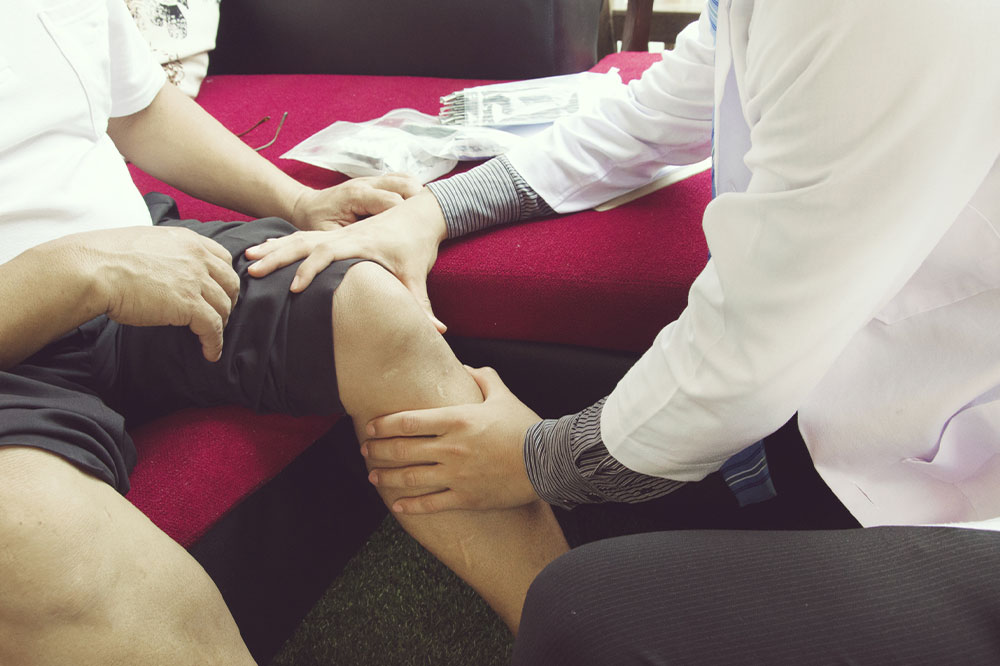
Osteoporosis – Risk factors, symptoms, and management
The bones in the body are living tissues that break down and get replaced constantly. However, certain health conditions restrict the development of new bones to replace the old tissues. One of those conditions is osteoporosis. It’s a common disease that makes the bones brittle and weak. The reduction in bone strength leads to fragility and causes them to fracture. The condition often goes undetected for years without any symptoms until the bones fracture.
Risk factors
Several risk factors may increase one’s risk of developing osteoporosis. Let’s take a look at the most common factors.
- Body mass
Those who are thin-boned have less bone mass and are at a greater risk of developing the condition when compared to those with thicker bones. - Hormonal changes
Those with low hormonal levels, such as women with low estrogen levels after menopause and men with low testosterone levels, are also at risk. - Age
As people grow older, they may lose more bone mass than the body can replenish. Therefore, aging may put them at a greater risk of developing osteoporosis. - Sex
Women have a lower peak bone mass and smaller bones when compared to men. Having smaller bones increases their risk of the disease. However, men over the age of seventy are also likely to develop brittle bones. - Genetics
If a family member is affected by the condition, their child or a blood relative may also develop weak bones. - Medical conditions
Conditions like gastrointestinal diseases, endocrine and hormonal diseases, rheumatoid arthritis, a few cancer types, anorexia nervosa, and HIV AIDS may also make one susceptible to weaker bones. - Food choices
Eating foods low in calcium and vitamin D may turn the bones brittle and cause fractures.
Signs and symptoms of osteoporosis
The signs and symptoms of osteoporosis can be categorized into the early stage and later stage. Most people won’t realize they have the condition until they break their wrist, hip, or another bone in the body. But there are some signs that one must look out for early on. They are mentioned below:
- Brittle fingernails
Nails that are brittle and weak are considered early signs of degrading bone health. - Weaker grip strength
People at risk of brittle bones may notice a reduction in their handgrip. Low handgrip may also put one at a greater risk of falls. - Loss of bone mass in the jaw
If a person’s jaw loses bone mass, their jawline may recede. A dentist must check a receding jawline immediately to identify the underlying disease.
When left unchecked, the loss of bone mass may worsen and lead to severe symptoms. These include the following:
- Fractures
A person with advanced osteoporosis may fracture their bone even after a minor fall. These fractures may also stem from a simple cough or sneeze. - Pain in the back or neck
People with osteoporosis may experience fractures in the spine due to compression. The fracture will cause extreme pain as the collapsed vertebrae may pinch the nerves on the spinal cord. - Height loss
Spinal compression fractures may also make the affected person shorter. Loss of height is one of the most common signs of severe osteoporosis. Compression of the vertebrae may even cause a curve in the upper back known as kyphosis. The condition can trigger chronic pain in the neck and back. - Difficulty breathing
Someone affected by kyphosis may find it harder to breathe. The condition applies pressure on the airways and limits lung expansion.
Diagnoses
There are two preferred methods when it comes to diagnosing osteoporosis. They are mentioned below:
- Dual-energy X-ray absorptiometry
The doctor measures bone density with the dual-energy X-ray absorptiometry (DXA machine) to identify if the patient has osteoporosis. The device scans the hip and spine to determine if the bone density is appropriate compared to other people of the same age and gender. A DXA diagnosis takes about ten to fifteen minutes to complete. It is also the primary method preferred by doctors. - Ultrasound
With ultrasounds, doctors conduct an imaging study to diagnose the possibility of brittle bones. Ultrasound tests for osteoporosis are done on the patient’s heel. The doctor can confirm if the bone density is normal or lower than average based on the results.
Prevention of osteoporosis
Multiple treatment methods exist for osteoporosis—these range from taking tablets to undergoing surgery, depending on the severity of the condition. At the same time, the patient must also play their part to boost their recovery. A few preventive methods to reduce the risk of osteoporosis and improve bone health are doing regular exercises, such as jogging, walking, and dancing, and eating calcium-rich foods like broccoli, kale, and low-fat dairy. One must avoid falls by wearing appropriate footwear and getting sufficient vitamin D from the sun, as it helps the body absorb more calcium.




